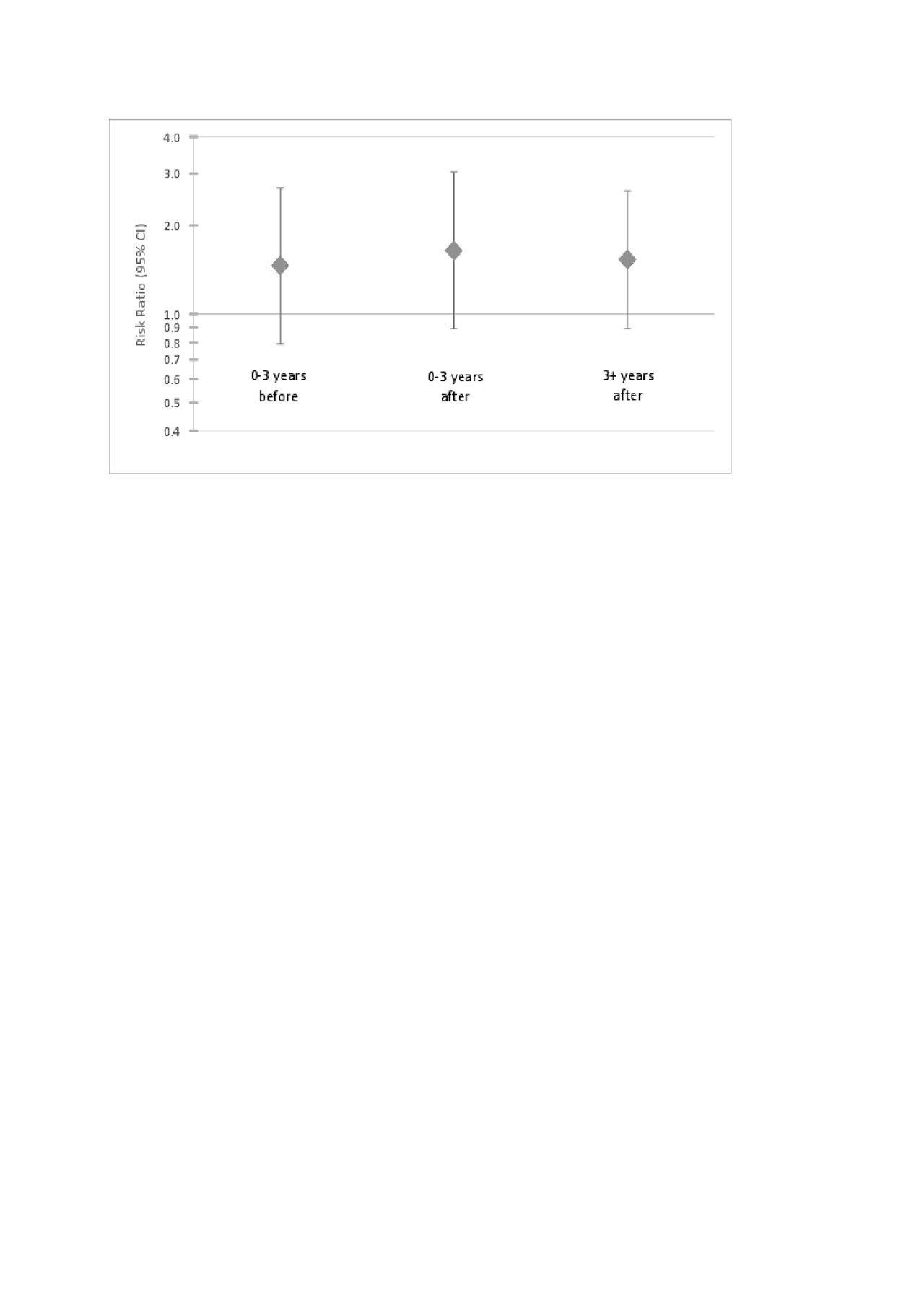Session Information
Date: Monday, November 11, 2019
Title: Epidemiology & Public Health Poster II: Spondyloarthritis & Connective Tissue Disease
Session Type: Poster Session (Monday)
Session Time: 9:00AM-11:00AM
Background/Purpose: Women with systemic lupus erythematosus (SLE) are at a greater risk of having a preterm birth than the general population. Most studies examine preterm births in women with SLE only after they have been diagnosed with SLE, but it has been established that both symptoms and immune abnormalities can appear years before a clinical diagnosis of SLE is made.
Methods: The Georgia Lupus Registry (GLR) is a population-based registry of individuals with SLE in 2002-2004 in Atlanta, Georgia. The GLR was matched to Georgia Birth Certificates from 1994-2013. Births were categorized by timing before and after diagnosis (≥3 years before, 0-3 years before, 0-3 years after and ≥3 years after). Risks of preterm birth (delivery < 37 weeks of gestation) were calculated. Log-risk models with generalized estimating equations accounted for multiple deliveries in the same woman. Only singleton births were analyzed.
Results: In 189 women, 297 singleton births were identified; 80% were to African American and 18% to white women, and 125 births occurred before and 172 births occurred after diagnosis (see figure 1). For births occurring ≥3 years before, 0-3 years before, 0-3 years after and ≥3 years after, the risks of preterm birth were 19%, 29%, 34% and 33%, respectively. Compared to women who gave birth ≥3 years before, women who gave birth 0-3 years before had slightly elevated risk of preterm birth (risk ratio [RR]: 1.46, 95% confidence interval [CI]: 0.79, 2.68), as did women who gave birth 0-3 years after (RR: 1.64, 95% CI: 0.89, 3.04) and women who gave birth ≥3 years after (RR: 1.53, 95% CI: 0.89, 2.62) (see figure 2). Analyses controlled for parity, age and race.
Conclusion: The risk of preterm birth is also increased preceding SLE diagnosis, although lower than that after diagnosis. This suggests late diagnosis of SLE or that immunologic and other factors may impact birth outcomes years before clinical disease.
To cite this abstract in AMA style:
Angley M, Howards P, Drenkard C, Lim S. Risk of Preterm Birth by Timing of Lupus Diagnosis Among Women in the Georgia Lupus Registry [abstract]. Arthritis Rheumatol. 2019; 71 (suppl 10). https://acrabstracts.org/abstract/risk-of-preterm-birth-by-timing-of-lupus-diagnosis-among-women-in-the-georgia-lupus-registry/. Accessed .« Back to 2019 ACR/ARP Annual Meeting
ACR Meeting Abstracts - https://acrabstracts.org/abstract/risk-of-preterm-birth-by-timing-of-lupus-diagnosis-among-women-in-the-georgia-lupus-registry/


